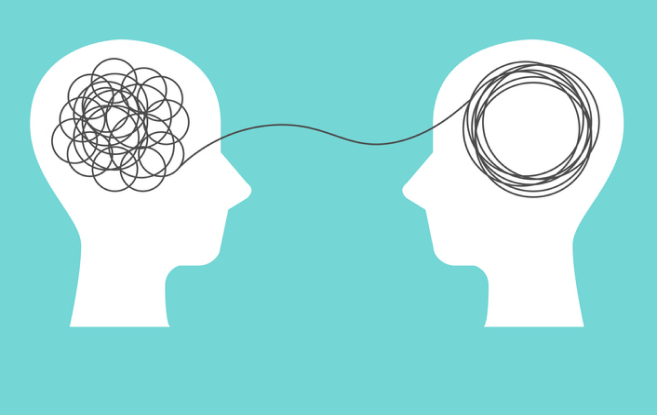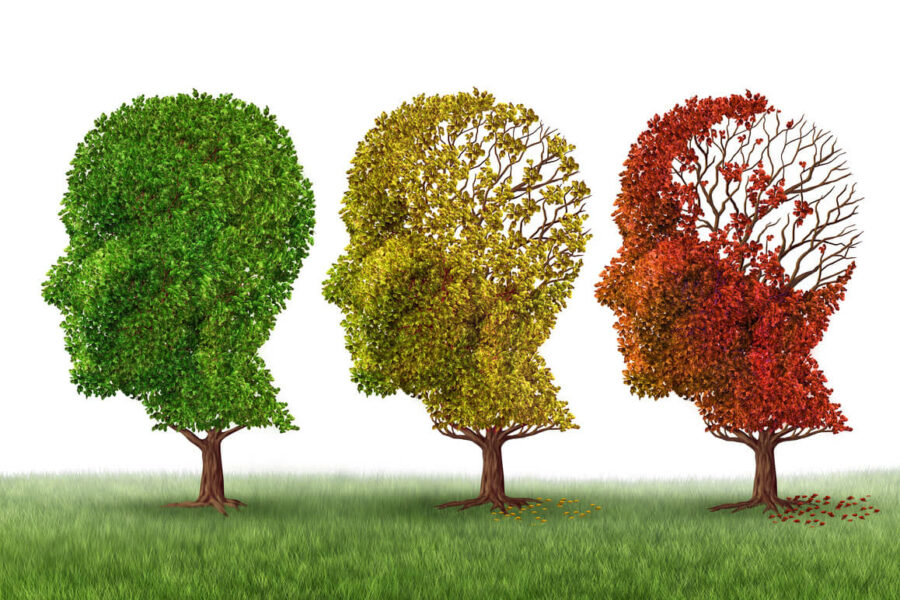Our brains are constantly being bombarded with endless stimuli from our surrounding environment, and yet we manage to filter out all of the unnecessary info to function properly in our day to day. How this happens is explained by the information processing theory. This framework was only developed relatively recently, in the 1960s, and it attempts to describe the process by which our brains absorb, interpret, and use the vast information around us.
Understanding the information processing theory will empower you to create learning and development resources that make a greater impact on your team, and your company.
Let’s walk through what the overall theory and its sub theories state, why it matters, and how you can apply this knowledge to create more effective learning and development resources.
What is information processing theory?
Information processing theory is a framework that explains how our mind takes in information, and then what it does with that information.
What is the main idea of levels of processing theory?
Specifically, it describes the process of intaking, processing, storing, and retrieving information. The theory contains three sub theories that dive into the processing and storing steps of cognitive information processing.
What do information processing theories focus on?
There are clear stages of processing that help us understand and respond to things around us. These stages include:
- Sensory input: The process begins with sensory information, where our senses gather raw data from our surroundings. Sight captures visuals, hearing registers sounds, taste discerns flavors, touch senses textures, and smell identifies scents. These inputs form the building blocks of our perceptual experience. In the context of a learning environment, including multiple sensory inputs increases the likelihood of retention.
- Perception: Following the input stage, perception comes into play. This stage is like solving a puzzle, where we piece together our raw sensory data into a cohesive and meaningful understanding. Perception allows us to recognize a friend’s face in a crowd, distinguish different tastes, or identify textures by touch.
- Encoding and storage: The journey continues with encoding and storage, where the brain carefully encodes the processed information and stores it for later retrieval. This step is like securely storing valuable documents for future reference.
- Retrieval and output: We reach the retrieval and output stage last. Here, the brain retrieves stored information, bringing it to the forefront of our minds. This information helps us decide what to do next. We choose how to interact with what’s in front of us based on past experiences.
Understanding these fundamental components deepens our appreciation of how our minds handle the influx of sensory input, transforming it into meaningful perceptions and storing them for future use. It’s a dynamic process that shapes our experiences and understanding of the world.
What are the 3 types of information processing theory?
Information processing theory isn’t just one approach— it’s a whole family of ideas. Let’s look at three main types, each offering a different perspective on how our minds handle the data received:
1. Serial processing model
The serial processing model is a way of understanding how people handle information by focusing on one piece at a time.
Imagine information moving through our mental processes step by step, like following a recipe. This differs from parallel memory processing, where we simultaneously handle and think about everything.
2. Parallel distributed processing model
Parallel processing is the brain’s ability to handle multiple pieces of information at the same time, allowing it to work on multiple things simultaneously.
For example, when we look at something, our brain breaks it down into four parts:
- Color
- Motion
- Shape
- Depth
It checks each part against what it remembers and figures out what is seen. Finally, it combines all this to understand what’s in front of us. This model is more like a complex web, with information processed in multiple interconnected networks simultaneously.
3. Levels of processing model
Created by Fergus I. M. Craik and Robert S. Lockhart in 1972, the levels of processing model states that the more deeply we think about and analyze something in our minds, the more likely we are to create a longer-lasting memory of this idea.
Simply put, the more we think about something, the more likely we are to remember it. Considering information deeply means it will be remembered and understood better. Being aware of this concept is especially important when you are presenting new information in the workplace.
Applying information processing in learning
Think about how you learn something new—say, how to use a new app on your phone. Information processing theory explains this learning process. From the moment you first see the app icon (sensory input) to understanding how to navigate it (perception), storing this knowledge (encoding and storage), and later using the app effectively (retrieval and output)—it’s all part of this fascinating information processing journey.
As information undergoes filtering at each processing stage, training managers should strive to use effective strategies to help the learners succeed.
These strategies include:
- Breaking down complex topics: Information overload is real. During training, it’s crucial to pace the learning. Offer breaks and give time for learners to digest information.
- Adding meaningful context: Learning is retained better when it’s relatable. Tie it to real-life situations and personal experiences. When you’re training a group on how to carry out a task, you should use tangible examples of how and when they’ll use this information directly on the job.
- Building bridges: Enhancing long-term memory retention involves layering your training material. This is achieved by connecting lessons, and building on previously learned concepts to create a cohesive experience.
Enforcing repetition: Imprinting new knowledge into long-term memory is aided by repetition. Repeating information in different formats (verbal, written, visual, or tactile) solidifies understanding and retention.
How and why information processing theory matters for your deskless workforce
Information processing theory isn’t just for academics. It has real-world implications, especially for deskless workers who may not have easy access to traditional learning environments. Let’s explore how it applies to employees in dynamic, hands-on roles.
Enhanced learning and skill development
For many employees the majority of meaningful learning happens directly on the job, but this is especially true for deskless workers. Information processing theory sheds light on how people take in information from their environment, whether it’s understanding safety protocols, new equipment operations, or customer service procedures. Knowing how their minds process and retain this information allows for designing tailored, effective training programs on a mobile training platform that offers resources that meet them where they are.
Streamlining problem-solving in the field
Deskless workers often encounter various challenges on the job that require quick thinking and problem-solving. Information processing theory, particularly parallel processing, helps us grasp how they process multiple pieces of information simultaneously, enabling organizations to design tools, workflows, and training that align with their cognitive processes. This results in lower cognitive overload and more effective problem-solving in the field.
Optimizing communication and task management
In dynamic work environments, like restaurants, warehouses, manufacturing floors, and more, effective communication and task management are critical. Recognizing that deskless workers have to perceive and process instructions in chaotic, distraction-filled environments is the first step in crafting clearer, more actionable directives. You must ensure that vital information is conveyed efficiently, enhancing productivity and reducing errors.
Applying information processing theory to the unique circumstances of deskless workers amplifies their capabilities, making their work safer, more efficient, and ultimately more satisfying. With it, you leverage cognitive insights to empower those in the field with the knowledge and tools they need to excel in their roles.
Create mobile training that employees can take anywhere

FAQs
What is the information processing theory?
Information processing theory explains how our minds intake information and what it does with it. It compares the human mind to a computer, illustrating how it takes in data, processes it, stores it, and uses it when needed.
What is the main idea of levels of processing theory?
The levels of processing theory suggests that information must be ingrained in our minds through meaningful association if we want to remember it better. It states that repetition alone is not enough for retention, and that new information needs to relate to past information if we want to be able to recall it in the future.
What are the 3 types of information processing theory?
Information processing theory comprises three main types. First, the serial processing model envisions information flowing through various stages sequentially. Second, the parallel distributed processing (PDP) model portrays data being processed simultaneously across interconnected networks. Third, the levels of processing model emphasizes the depth of mental processing for better retention and recall.
What are the 4 stages of information processing theory?
The information processing theory outlines four stages
- Sensory input
- Perception
- Encoding and storage
- Retrieval and output
What is an example of information processing theory?
Imagine reading a new book. As you read, your brain goes through stages of processing:
- Sensory input: receiving the words
- Perception: comprehending their meaning
- Encoding and storage: drawing a connection between the points of the book to your existing knowledge and thoughts and storing it
- Retrieval and output: recalling the book’s main ideas when discussing it with someone
Understanding intake to improve output
Information processing theory unveils how our minds absorb and use the abundance of information surrounding us. It offers a blueprint for understanding the intricate processes that guide our comprehension, memory, and decision-making.
Understanding this theory equips you to create learning and training materials that are designed to make a greater impact on your learners, and increase the likelihood that this new information will be remembered over the long term.
In this dynamic interplay of perception, learning, and action, the symphony of information processing shapes our existence and how we interact with the world.
Key takeaways
- Understanding the fundamental stages of information processing—sensory input, perception, encoding and storage, retrieval and output— sheds light on how the human mind processes and uses data.
- Information processing theory is more than an academic concept; it has tangible relevance for deskless workers. Tailoring training, communication, and task management to align with cognitive processes enhances efficiency and safety on the job.
- Information processing theory encompasses serial processing, parallel distributed processing (PDP), and levels of processing models. Each offers a unique perspective on how our minds handle information.
- The theory aids in problem-solving by revealing how our brains process new information. It enables us to design workflows and tools harmonizing with cognitive processes, leading to quicker, more effective solutions.
- Understanding information processing theory is more than just a theoretical endeavor. It provides a pathway to personal growth, improved education, and enhanced decision-making. By leveraging these insights, we navigate the complexities of our world with increased wisdom and clarity.


